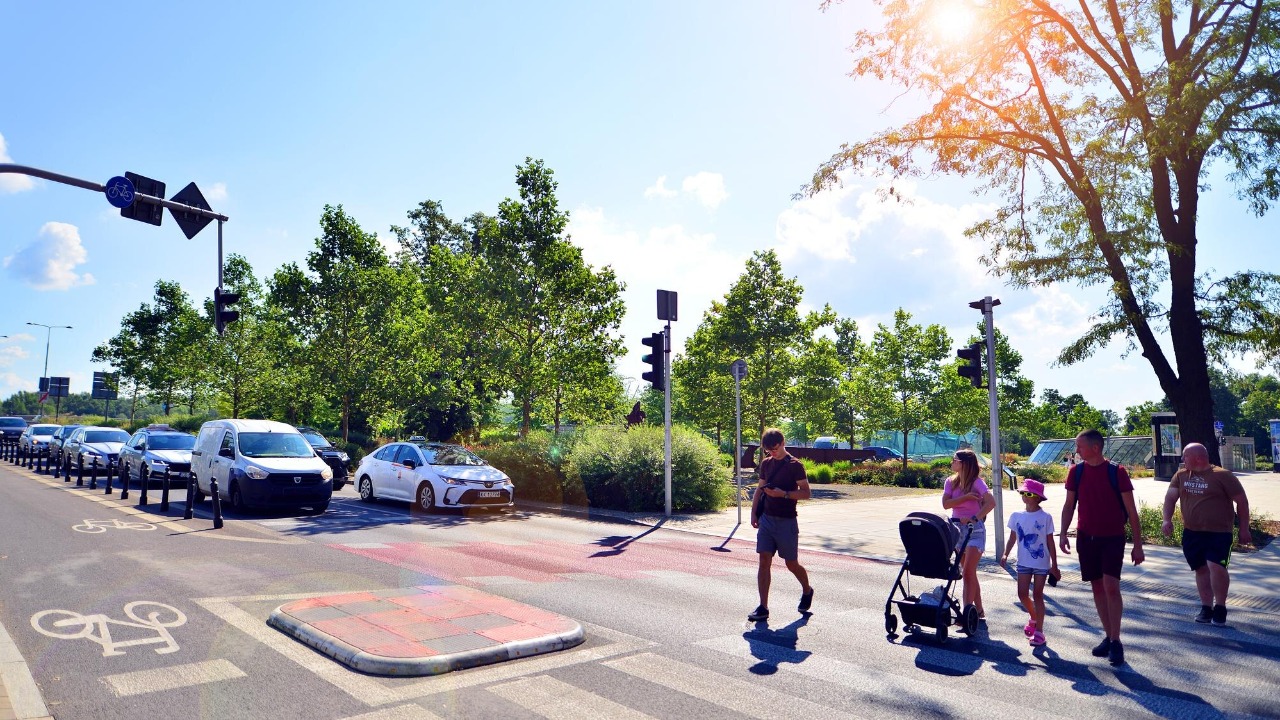
Researchers at North Carolina State University (NC State) are advocating for a significant change in traffic management by proposing the addition of a fourth color to traffic lights: white. This new color is intended to facilitate the integration of self-driving cars into existing traffic systems by providing a dedicated signal for automated vehicles. The concept, first introduced in early 2024, has gained traction in 2025, with discussions about its potential implementation in the United States. The white light would signal human drivers to yield, allowing autonomous vehicles to navigate intersections safely.
The Proposal from NC State Researchers
NC State researchers have been at the forefront of this innovative proposal, which was detailed in a study released on March 14, 2024. The study suggests introducing a white light to the traditional red, yellow, and green traffic signals. This initiative aims to create a distinct signal that automated vehicles can interpret without conflicting with human drivers’ cues. The researchers emphasize the necessity of evolving traffic infrastructure to accommodate the growing presence of autonomous vehicles on the roads. This proposal originates from North Carolina, where the researchers are keen to address the challenges posed by mixed traffic environments involving both human-driven and self-driving cars. Read more.
The introduction of a white light is seen as a crucial step in ensuring that self-driving cars can operate efficiently and safely. By providing a dedicated signal, the white light would help prevent confusion and potential accidents at intersections. This proposal highlights the need for traffic systems to adapt to technological advancements and the increasing adoption of autonomous vehicles. The researchers believe that without such adaptations, self-driving cars could face delays or errors, leading to higher collision risks, particularly in urban areas like those in North Carolina.
Purpose and Function of the White Light
The proposed white light would serve as a yield signal for human drivers, instructing them to stop and allow self-driving cars to pass through intersections first. This approach aims to reduce confusion in mixed traffic environments, where both human-driven and autonomous vehicles share the road. The white light’s activation would indicate priority for autonomous vehicles, requiring human drivers to wait until the light changes. This system is designed to enhance safety and efficiency at intersections, particularly during peak automation scenarios. Learn more.
Reports from February 19, 2023, explain that the white color’s high visibility and neutrality make it ideal for signaling automated systems without mimicking existing colors that could cause errors. The choice of white is strategic, as it stands out from the traditional red, yellow, and green lights, ensuring that both human drivers and automated systems can easily recognize and respond to it. This clarity is essential for maintaining smooth traffic flow and preventing accidents at intersections.
Potential Rollout in America by 2025
The introduction of a fourth color for traffic lights in America is slated for potential implementation in 2025. This change would require drivers to recognize and respond to the new white signal by yielding appropriately. Discussions on January 4, 2025, highlighted that implementing this change would involve updating traffic lights nationwide. Drivers would need to pause during white phases to prioritize self-driving traffic, ensuring that autonomous vehicles can navigate intersections without interference. Find out more.
In one unspecified state, white lights may be added soon as of October 5, 2025. This addition is expected to enhance safety by dedicating intersection control to autonomous vehicles during peak automation scenarios. The rollout of white lights would be a significant step in adapting traffic systems to the increasing presence of self-driving cars, ensuring that both human and machine-driven traffic can coexist seamlessly. Read further.
Broader Implications for Traffic Safety
The addition of a white light aims to prevent accidents at intersections where self-driving cars might misinterpret standard red-yellow-green sequences designed for humans. As the number of autonomous vehicles is projected to increase by 2025, the need for a dedicated signal becomes more pressing. NC State’s 2024 research underscores that without a fourth color, autonomous vehicles could face delays or errors, potentially leading to higher collision risks in urban areas. This proposal is not just about technological advancement but also about ensuring the safety and efficiency of future traffic systems. Explore more.
By 2025, the white light’s role in America would educate drivers on new protocols, such as stopping fully when it appears, to integrate human and machine-driven traffic seamlessly. This education is crucial for ensuring that drivers understand and comply with the new traffic signals, reducing the risk of accidents and improving overall traffic flow. The introduction of a white light represents a significant shift in traffic management, reflecting the broader trend of integrating advanced technologies into everyday life.